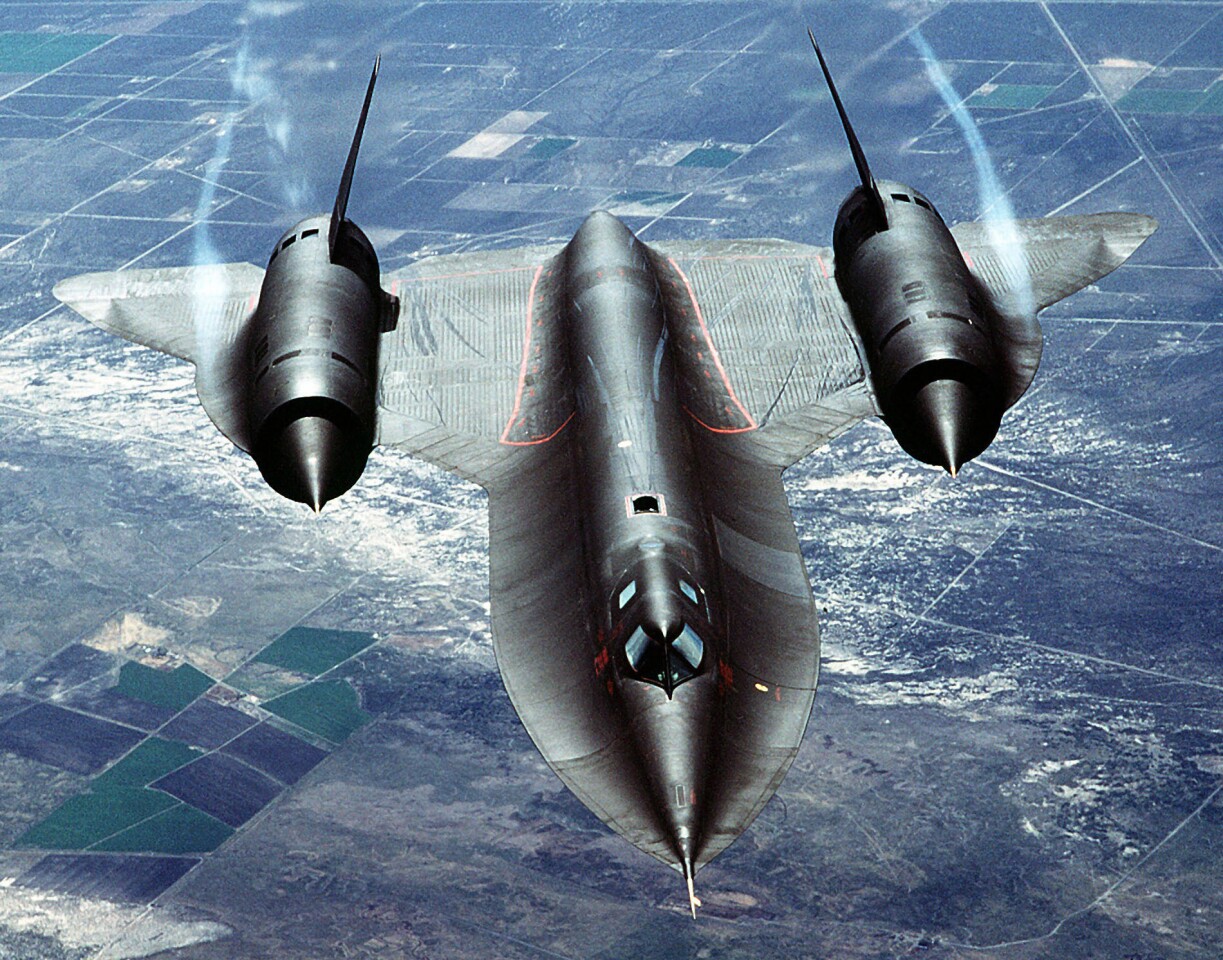When the last SR-71 Blackbird was grounded in 1998 it was a double blow. Not only did aviation lose one of the most advanced aircraft ever built, but also one of the most beautiful. Lockheed Martin's Skunk Works has now revealed that it is building a successor to the Blackbird: the SR-72. Using a new hypersonic engine design that combines turbines and ramjets, the company says that the unmanned SR-72 will be twice as fast as its predecessor with a cruising speed of Mach 6.
The SR-71 Blackbird is one of history's great aircraft. It was built during the Cold War in the early 1960s by Lockheed at its secret Skunk Works facility and flew from 1966 to 1998. With black paint covering its unprecedented titanium fuselage, it was designed as a reconnaissance platform capable of flying 2,900 nautical miles (5,400 km) at sustained supersonic speeds at an altitude of 80,000 ft (24,000 m).
The Blackbird could fly so fast and so high that it could literally outrun enemy missiles, and routinely did. Needless to say, it left interceptors far behind and of the 32 that were built, not one was lost to enemy action. It even grew stronger over the years because the heat generated in flight was so great that the titanium hull annealed.

The SR-71 was also famous for holding a raft of records. It was the world's fastest and highest-flying operational manned aircraft, reaching 85,069 feet (25,929 m) in sustained flight, and it still holds the speed record. On September 1, 1976, a US Air Force SR-71 Blackbird flew from New York to London in 1 hour 54 minutes and 56.4 seconds at a peak velocity of about Mach 3.2 (2,436 mph, 3920 km/h). To this day, no aircraft exists that can match its performance.
To the end it was still breaking records. After the Cold War ended, many SR-71s ended up in museums as the program was wound up. When one SR-71 was delivered to the Smithsonian Institution in 1990, it broke four speed records flying from Los Angeles to Cincinnati, Ohio.
The idea of a hypersonic replacement has been kicked around for years, and now Lockheed is working on the SR-72. Unlike its predecessor, the SR-72 will be unmanned, but it will be twice as fast with a cruising speed of Mach 6 (4,567 mph, 7,350 km/h).

The SR-72's purpose is to provide the United States with not only a hypersonic recon platform, but also a strike aircraft as well. "Hypersonic aircraft, coupled with hypersonic missiles, could penetrate denied airspace and strike at nearly any location across a continent in less than an hour," says Brad Leland, Lockheed Martin program manager, Hypersonics. "Speed is the next aviation advancement to counter emerging threats in the next several decades. The technology would be a game-changer in theater, similar to how stealth is changing the battle space today."
According to Leland, a Mach 6 platform would not only leave very little time for an enemy to respond, but it also be a very effective way to launch hypersonic missiles. Since these wouldn't need a booster rocket when launched at six times the speed of sound, they can be of much lighter and simpler construction.
The key to the SR-72 is what Lockheed calls Turbine-Based Combined Cycle Propulsion, which incorporates Lockheed's experience in building the HTV-2 hypersonic demonstrator that flew at Mach 20 (15,224 mph, 24,501 km/h) in tests. In this new system, the twin engines of the SR-72 are actually two engines in one. Each engine shares combined inlets and nozzles connected to two very different powerplants as a way to significantly reduce drag.

The upper engine is a turbine, which is used to power the SR-72 as it takes off from a conventional runway and accelerates it to Mach 3. Then the lower dual-mode ramjet takes over and accelerates the plane to Mach 6. The significance of this design is that Lockheed collaborated for seven years with Aerojet Rocketdyne on figuring out how to use an off-the-shelf turbine that could be incorporated into a hypersonic jet system.
In an interview with Aviation Week, which broke the story, Leland explained that the retirement of the SR-71 left significant gaps in the satellites, subsonic manned and unmanned platforms meant to replace it, which the SR-72 will fill. The article went on to point out that the SR-72 program is meant to dovetail with the Pentagon's hypersonic research and weapons programs, which has dictated the timetable and many design parameters.
According to Leland, no new technologies needed to be invented for the SR-72 so a demonstration aircraft could fly by 2018, and the plane could be operational by 2030. "The demonstrator is about the size of the F-22, single-engined and could fly for several minutes at Mach 6," says Leland. "It will be about the size of the SR-71 and have the same range, but have twice the speed."
The video below is an interview with a former SR-71 pilot.
Sources: Lockheed Martin, Aviation Week











